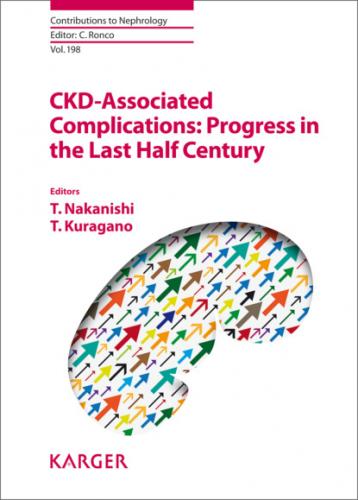20van Loon MM, Kessels AG, Van der Sande FM, Tordoir JH: Cannulation and vascular access-related complications in hemodialysis: factors determining successful cannulation. Hemodial Int 2009; 13: 498–504.
21Tordoir JH, van Loon MM, Peppelenbosch N, Bode AS, Poeze M, van der Sande FM: Surgical techniques to improve cannulation of hemodialysis vascular access. Eur J Vasc Endovasc Surg 2010; 39: 333–339.
22Weyde W, Krajewska M, Letachowicz W, Porazko T, Watorek E, Kusztal M, Banasik M, Golebiowski T, Bartosik H, Madziarska K, Janczak D, Klinger M: Obesity is not an obstacle for successful autogenous arteriovenous fistula creation in haemodialysis. Nephrol Dial Transplant 2008; 23: 1318–1322.
23Weyde W, Krajewska M, Letachowicz W, Klinger M: Superficialization of the wrist native arteriovenous fistula for effective hemodialysis vascular access construction. Kidney Int 2002; 61: 1170–1173.
24Bourquelot P, Tawakol JB, Gaudric J, Natário A, Franco G, Turmel-Rodrigues L, Van Laere O, Raynaud A: Lipectomy as a new approach to secondary procedure superficialization of direct autogenous forearm radial-cephalic arteriovenous accesses for hemodialysis. J Vasc Surg 2009; 50: 369–374.
25Ladenheim ED, Krauthammer JP, Burnett J, Dunaway T, Parvez S: Liposuction for superficialization of deep veins after creation of arteriovenous fistulas. J Vasc Access 2014; 15: 358–363.
Masayoshi Nanami, MD, PhD
Department of Internal Medicine, Division of Kidney and Dialysis, Hyogo College of Medicine
1-1 Mukogawa-cho
Nishinomiya 663-8501 (Japan)
E-Mail [email protected]
Nakanishi T, Kuragano T (eds): CKD-Associated Complications: Progress in the Last Half Century.
Contrib Nephrol. Basel, Karger, 2019, vol 198, pp 12–20 (DOI: 10.1159/000496304)
______________________
Malnutrition-Wasting Conditions in Older Dialysis Patients: An Individualized Approach
Norio Hanafusaa · Ken Tsuchiyaa · Kosaku Nittab
aDepartment of Blood Purification, Kidney Center, Tokyo Women’s Medical University, Tokyo, Japan; bDepartment of Medicine, Kidney Center, Tokyo Women’s Medical University, Tokyo, Japan
______________________
Abstract
Background: The dialysis population is growing and aging worldwide. The aging dialysis population exhibits specific conditions, including sarcopenia, protein-energy wasting, and frailty, that are associated with worse outcomes. Thus, strategies to address these conditions are indispensable to improving prognosis, quality of life, and ability to perform activities of daily living in older patients. Summary: Several strategies have been employed to manage these conditions. The two major approaches are nutritional therapy and exercise training. These correlate strongly with each other and each is necessary to maintain the health of patients. Ensuring adequate protein and energy intake is the mainstay of nutritional therapy. However, older dialysis patients often have reduced appetite, and appropriate nutritional therapy can enhance appetite. Conversely, nutritional therapy without an appropriate exercise training system will fail to enhance physical function. Thus, the focus of attention has been on exercise training both during dialysis treatment and while at home. The Japanese Society of Renal Rehabilitation has issued a guideline for exercise training in patients with kidney disease. It encourages using the time during dialysis treatment for performing both nutritional intake measures and exercise training. Nutritional care in dialysis patients has previously focused on restriction of dietary intake. However, patients with these malnutrition-wasting conditions should be encouraged to improve their dietary intake and physical activity. Older dialysis patients have heterogenic characteristics in terms of frailty, so their nutritional and exercise plans should be individualized. Key Messages: Individualized management should be used in the heterogeneous older dialysis population, with special considerations for malnutrition-wasting conditions.
© 2019 S. Karger AG, Basel
Introduction
The world over, the dialysis population is becoming older. The average age of the dialysis population in Japan has exceeded 65 years old and the proportion of patients aged 70 years or older is contributing to the growth of the entire dialysis population [1]. Thus, more attention should be paid to the management of the older dialysis population. This population has a set of distinct phenotypes characterized by malnutrition-wasting conditions that include sarcopenia, dynapenia, protein-energy wasting (PEW), and frailty [2, 3]. Therefore, these conditions need to be addressed in the management of their care. In this review, we discuss the significance of malnutrition-wasting conditions, the strategies to address them, and the heterogeneity of the older dialysis population.
Malnutrition-Wasting Conditions
Older persons even without kidney disease manifest several distinctive phenotypes relating to malnutrition-wasting conditions. These conditions include sarcopenia, dynapenia, PEW, and frailty, with each having been shown to relate to a worse outcome.
Sarcopenia
Sarcopenia is a reduction in muscle mass. The concept itself is old and, in 1989, Rosenberg [4] defined the condition as the reduction of muscle mass due to advanced age. Since then, it has been broadened to include reduction in muscle mass due to other reasons. One study of 330 incident dialysis patients indicated that a reduction in both muscle mass and strength was associated with worse all-cause 5-year survival (hazard ratio [HR] 1.93; 95%CI 1.01–3.73) [5]. Interestingly, only the reduction in muscle mass was not associated with worse outcome (HR 1.23; 95% CI 0.56–2.67) [5]. This suggests the concept of dynapenia [3] (the age-associated reduction in muscle strength), which may be related to neurologic or muscular function.
Protein-Energy Wasting
PEW can arise from a wide variety of conditions observed in advanced chronic kidney disease or end-stage renal disease (ESRD) [3]. The co-existence of malnutrition and wasting causes these conditions. Dialysis patients often experience wasting conditions because of inflammation, loss of amino acids into the dialysate, acidemia, endocrinological disorders, and anemia. The International Society of Renal Nutrition and Metabolism defines PEW as “a state of decreased body stores of protein and energy fuels (body protein and fat masses)” [6]. Serum albumin is a key factor in PEW, and low serum albumin or reduction
